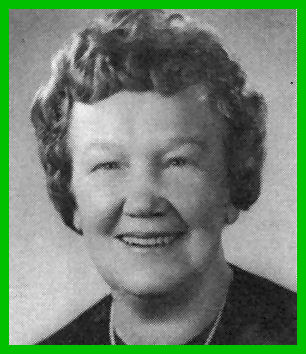

Regina Flannery was born in Washington D.C. in December 1904; the daughter of (Martin) Markham and Regina (née Fowler) Flannery; with brothers Markham and Cyril, and sister Elizabeth. She was the grand-niece of the memorial sculptor Lott Flannery. Regina married Prof. Karl F. Herzfeld on 9th June 1938.
Regina graduated from the Academy of Holy Cross and earned her bachelor’s degree from Washington, D.C.'s Trinity College. She was hired as a research assistant by Msgr. John Montgomery Cooper of Catholic University of America (CUA), helping him with his research on childcare institutions such as orphanages. At the time, CUA was one of a handful of American universities that offered classes in anthropology. During her time with Msgr. Cooper, she met anthropological heavyweights such as Alfred V. Kidder, often referred to as the “father of modern archeology.” Listening to these scholars talk about their travels and the people groups they studied, she decided that anthropology was “exotic and exciting” and she earned her CUA master’s degree and doctorate in anthropology in 1931 and 1938, respectively.
She was one of the earliest female scholars in anthropology, the first laywoman to teach at CUA, and an authority on Gros Ventre and Cree tribes. In the early 1930s, she travelled to the Mescalero Apache reservation in Santa Fe, New Mexico, where she studied the tribe's traditional four-day rite for adolescent girls. In 1933, Regina travelled alone by train and then canoe to rural Ontario and spent six months interviewing elderly Cree women on their folkways and daily habits. She returned many times to the Cree community, as recently as 1985, when she met descendants of those she had interviewed in the 1930s. In 1935, the Gros Ventre Nation adopted her and named her Ithenakya ("woman chief") after an ancestor of one of the elders.
Regina was editor of "Primitive Man" and "Anthropology Quarterly" from 1949 to 1963, and her books included "An Analysis of Coastal Algonquian Culture" (1939) and "The Gros Ventres of Montana" (1952).
Regina was promoted to associate professor in 1948 and to full professor in 1953. She served as chair of the anthropology department from 1953 to 1969. During her tenure as chair, enrollment increased and, for the first time, an undergraduate program was offered in anthropology. Her fieldwork was not restricted to American Indians but also included Tibetan refugees in Switzerland (1970).
Although Regina retired in 1971 and became a professor emerita, she remained an active scholar. She published more than 10 articles after 1971 and attended many conferences on the tribes she studied. Though her vision was impaired in later years, Regina was still serving as a consultant to colleagues and working with a CUA doctoral student at the time of her death.
Regina died on 26th November 2004 just two weeks short of 100 years of age, and is buried in Mount Olivet cemetery.
[her portrait is illustrated above; courtesy of Catholic University of America]